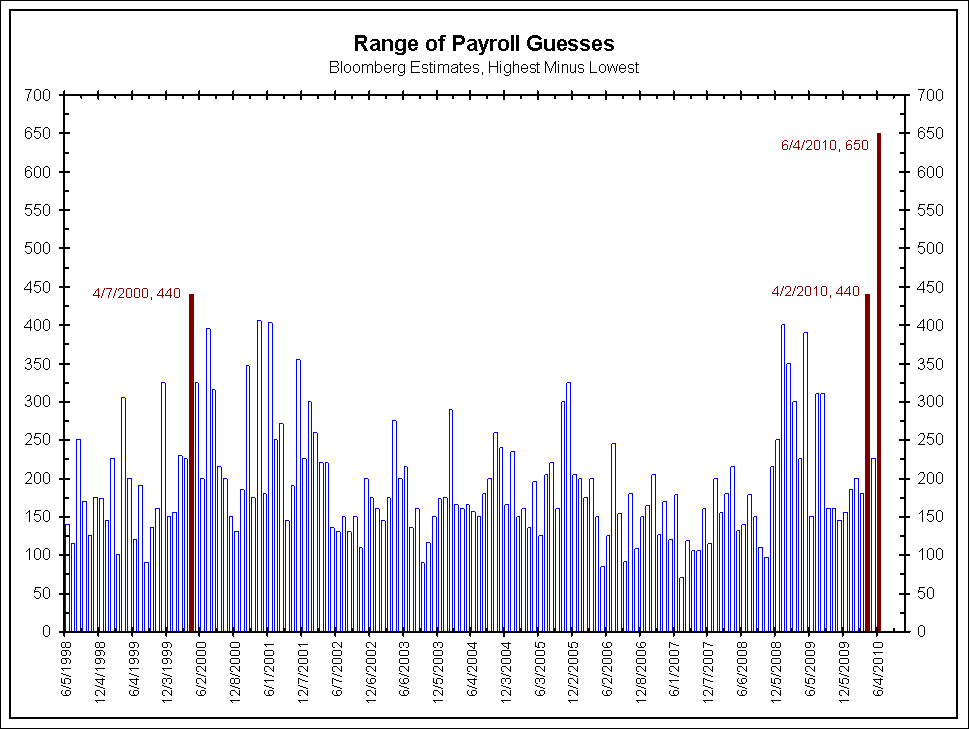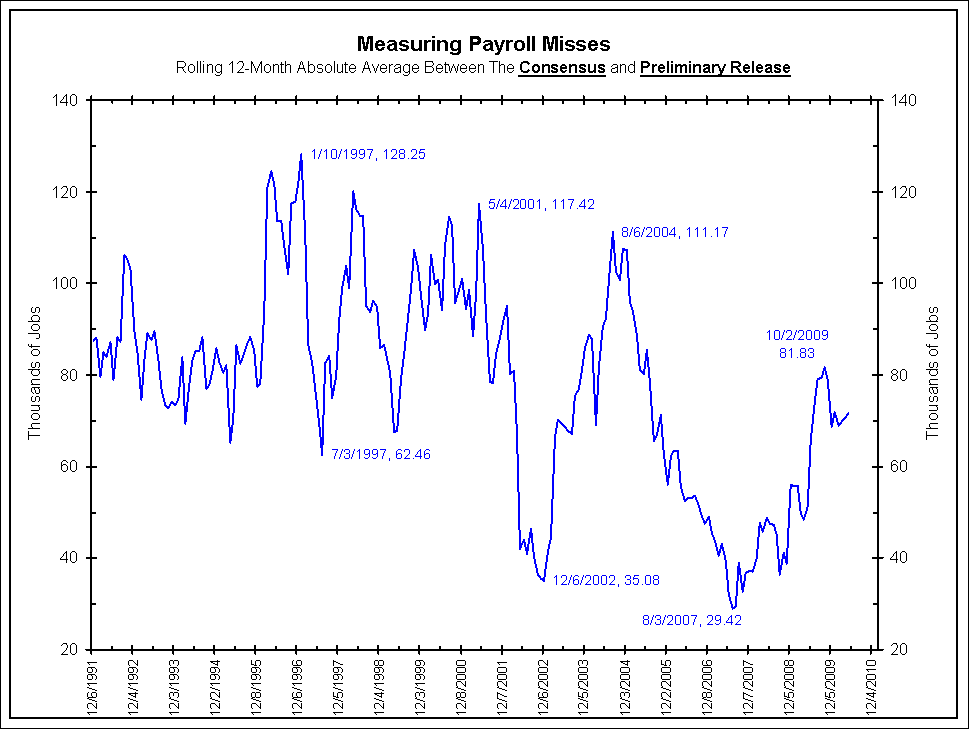Tomorrow the Bureau of Labor Statistics will release May’s nonfarm payroll number. According to Bloomberg, the current consensus is looking for a gain of 508,000 jobs thanks to an expected hiring of over 300,000 census workers. Consensus data goes back to February 1986 and this is by far the largest estimate ever. The previous record occurred in June 2000 (another census hiring month) when economists estimated a gain of 380,000 jobs (the actual number came in at 231,000 jobs).
As the chart below shows, the current range of estimates from highest to lowest is 650,000, by far the widest ever. These estimates range from a gain of 100,000 (Hugh Johnson, Johnson Illington Advisors) to an estimate of 750,000 (Derek Holt, Scotia Capital). This wide range is not limited to two outliers, either. Four economists are looking for payroll gains of less than 300,000 and four others are looking for gains of 700,000 or more. So even an average of the four highest and lowest produces the widest spread ever seen.
<Click on chart for larger image>
Is A Record Miss Coming?
The largest payroll miss ever occurred in March 1996 when a consensus forecast of 297,000 was blown away by a record increase of 705,000 jobs (for a miss of 409,000). For this record to fall, May payrolls would have to come in at over 910,000. This would be an all-time first-release record and is not likely (the old record was 733,000, September 1983). The largest miss in the other direction occurred in March 2003 when a consensus estimate of 20,000 was shocked as jobs actually declined by 308,000 (for a miss of 328,000). For this record to fall, May payrolls would have to come in at 177,000 or less. This is not only possible, but within the current range of estimates!
The chart below shows a rolling 12-month average of payrolls misses. The average miss on payroll estimates over the past year has been roughly 70,000 jobs. That said, none of the consensus estimates in the last 12 months have been as extreme as the May 2010 estimate. With extreme guesses come extreme misses.
<Click on chart for larger image>
All About Census Workers
The confusion this month is largely due to the number of census workers hired. The consensus believes about 300,000 were hired, meaning the number of jobs created ex-census is about 200,000. While this sounds simple enough, a deeper look muddles the issue a bit.
In the first chart above, note that April 2000 saw a then-record range of estimates of 440,000 jobs (a record that held until this month). April 2000 was also a census hiring month that produced extreme uncertainty/confusion. Additionally, in May 1990, another census hiring month, the consensus expected a gain 370,000 (third-highest estimate ever, behind this month and the census hiring month of June 2000). The market was shocked when May 1990 payrolls printed a meager 64,000 jobs (a miss of 306,000, the second largest over-estimate ever). So, while it is easy to understand why estimates for May 2010 payrolls are all over the place, the reality is census month estimates often produce a record range of opinions and record misses. This month is currently shaping up as the largest extreme ever.
Conclusion – What Does It Mean?
With a record range and a history of huge misses when census workers are involved, how does one intepret May’s payrolls results? This is a good question and we have no answers.
If payrolls do print 500,000 jobs, is this a non-event because it is the estimate and expected? To repeat, will one of the largest payroll numbers ever printed be a non-event?
If May estimates are off by hundreds of thousands of jobs, does this rock the markets? Or, does the fact that the range of estimates is over 650,000 jobs mean there is no strong consensus and therefore no strong opinion?
Friday June 4 should be interesting as the market is about to get a payroll release with a consensus about as confused as it has ever been.




What's been said:
Discussions found on the web: